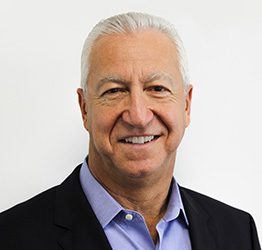Enterprise AI is changing manufacturing operations, and ushering in a new era of multi-disciplinarians.

By Dominic Gallello
As artificial intelligence permeates more of manufacturing, reliability engineers who can function as multi-disciplinarians will emerge as the new “got to have” position.
The catch phrase for the next 10 years will be “autonomous plant operations” as the age of Industry 4.0 takes hold. Devices, processes, people and systems will be digitally connected. Cyber-physical machines will self-adjust to optimize operations.
None of these changes are going to happen universally, however, without new software, new processes and, most importantly, new roles that never existed before. Think about it. Before there were CAD systems, there was no CAD Manager. Before there were databases, there were no database administrators (DBAs). Today, these positions are indispensable.
When it comes to keeping trillions of dollars of interconnected plant machinery running at peak performance, the dynamic will be no different.
“Problem solving has multiple sides to it,” Tripureswar Chattopadhaya, Business and Digital Strategy Leader at Ma’aden Gold, told me recently. “Our reliability engineers are not just looking at machine conditions but taking the help of data and AI-tools to spot incipient issues early and correlate events early. A machine failure may manifest in a compromised coupling, but the underlying causes could easily be a process cause. Our focus is on bringing that multi-disciplinary inclusive approach to operations and maintenance that sets its own virtuous cycle.”
Reliability professionals face a great challenge as well as an exciting opportunity. With the tsunami of high resolution, low-cost sensors that have come onto the market, along with machine learning and cloud computing, multi-disciplinarians will take their place at the center of enterprises.
Until now, reliability professionals were generally schooled and skilled in one discipline. They were experts in vibration, oil analysis, infrared, motor currents – the list goes on and on.
While this model has served the industry well, the advent of AI changes things. AI has enormous capability to combine signals from a multitude of data sources to perform multivariate analysis in seconds that a mere mortal would take days or weeks to process. Their findings, meanwhile, will not come close to the accuracy that a computer can muster in the world of plant operations.
Design engineering went through the same transition. Engineering simulations have moved from silos of analysis (e.g., structural, CFD, acoustics, electrical, etc.) to co-simulations of numerous disciplines that capture more accurate predictions.
A car hitting a curb is a standard physical testing event that is expensive for car companies. Many a lower control arm was tossed into the trash after the test. Using co-simulation, the engineer can know what is going to happen virtually before any physical testing ever takes place. Physical testing then becomes just a validation of what you already know.
In aircraft design, a flap deployment using multibody dynamics on its own looks good but lacks real insight. But when you combine flap deployment with computational fluid dynamics (i.e., wind pressure at various speeds) and structural analysis, you can more easily detect hot spots in the metal that can lead to devastating consequences.
So now it is the turn of the reliability engineer. Instead of looking at silos of data, new citizen data scientist tools are allowing reliability engineers to interpret signals that increase over time as early warnings of potentially catastrophic failures. This new human/computer interaction will be the norm for a new kind of reliability engineer. These engineers will be comfortable using tools to harness vast amounts of data coming off sensors, predicting the future and prescribing the corrective actions required based upon both current and future state that can now be forecasted with great accuracy.
Every day I see examples of how manufacturing plants could have mitigated serious damages using new tools that look at larger datasets.
Take the case of a large, off-gas multi-stage reciprocating compressor that had to be stopped at the oilfield due to high vibrations. An inspection immediately uncovered the failure of the second stage discharge valve, causing leakage. Closer monitoring of day-to-day variations of valve temperatures and thermodynamic efficiencies would have detected the issue in advance and avoided the unplanned stoppage.
In another example, I recently saw excessive scaling in a large centrifugal blower at a petrochemical plant. The scaling in the impeller blades was near-instantaneous, unexplainable and forcing shutdowns due to vibration overshoots. Mechanical fixes were done, but the issue remained.
An AI-driven online digital twin of the blower, however, revealed interesting patterns that pointed to faulty temperature controls in an upstream crystallizer circuit that led to the entrainment of solids in the gas that went through the blower.
In the cases above, it’s clear that analyzing data from multiple sources and methods – process and mechanical – is the only way to obtain holistic assessments and timely insights on asset health. before it becomes too late to avoid damage. AI can collect and organize data for those assessments, but multi-disciplinarians are necessary to glean insights from the AI’s work.
Logan Aluminum, which produces around 46 percent of North American beverage can sheet, recently transitioned from a route-based vibration program to a multi-variate AI and failure mode and effects analysis approach for their critical equipment reliability monitoring to enhance their operations. Their new model integrated the process telemetry from their preexisting data lake but required new talent.
“Logan’s reliability team now depends on this new breed of reliability engineers who are knowledgeable in both the cyber physical production equipment in addition to the advanced reliability engineering,” said Vijay Kamineni, the company’s chief innovation and technology leader.
As digital manufacturing becomes the norm, there is no doubt that this new multidisciplinary hero will emerge and take center stage in plant operations.

Dominic Gallello is CEO of Symphony IndustrialAI. Gallello is an established technology executive with a comprehensive background in engineering vertical software solutions at companies, including MSC Software, Autodesk, Macromedia and Intergraph Japan. He has led three successful public and private software companies over the past 16 years, resulting in $1.3 billion in exit value, with an average increase in value of more than 300 percent. He was named a SaaS Top 50 CEO in 2018 and brings a track record of company culture awards and more than fifty product awards, including two R&D 100 awards.
Scott Ellyson, CEO of East West Manufacturing, brings decades of global manufacturing and supply chain leadership to the conversation. In this episode, he shares practical insights on scaling operations, navigating complexity, and building resilient manufacturing networks in an increasingly connected world.